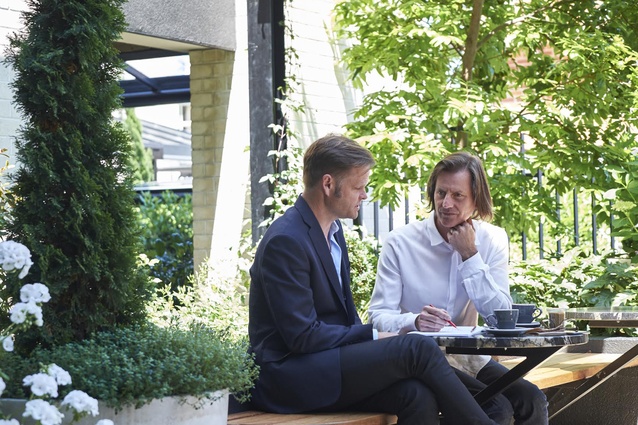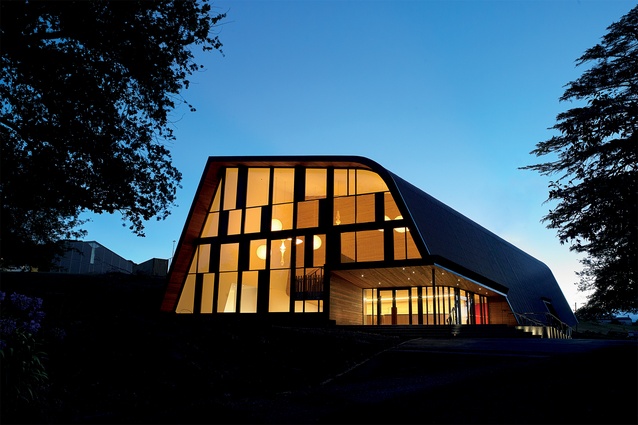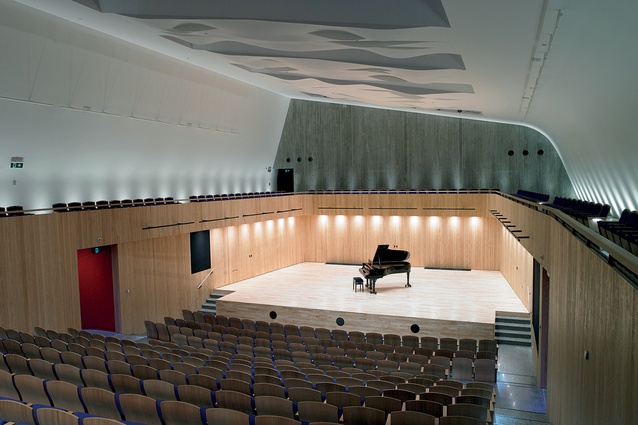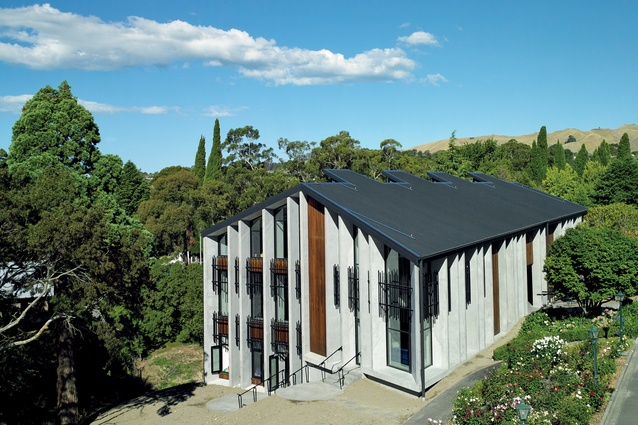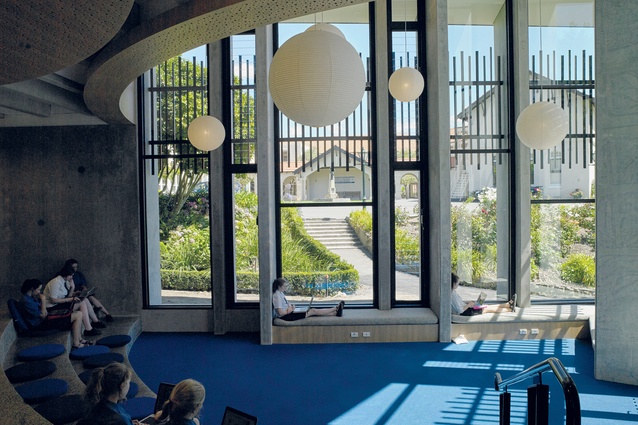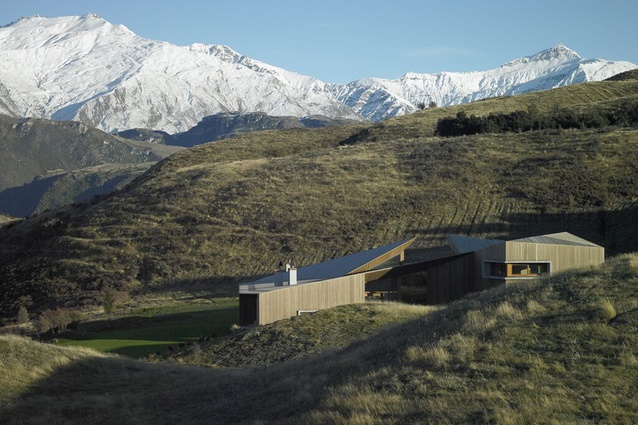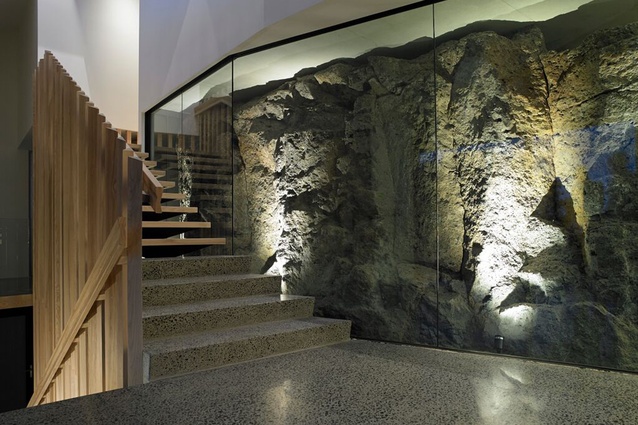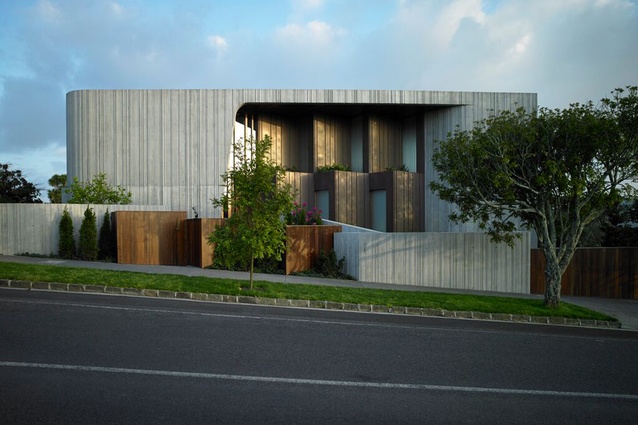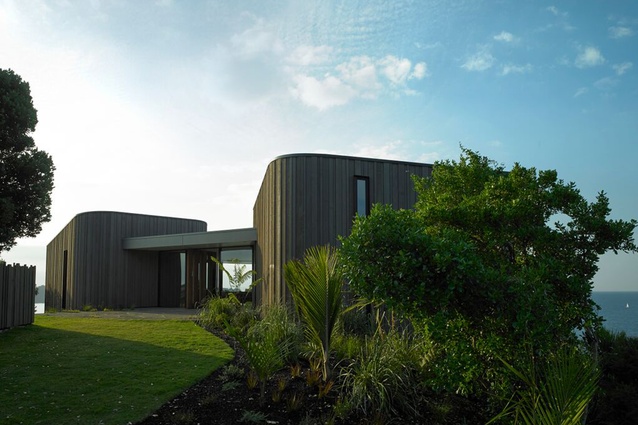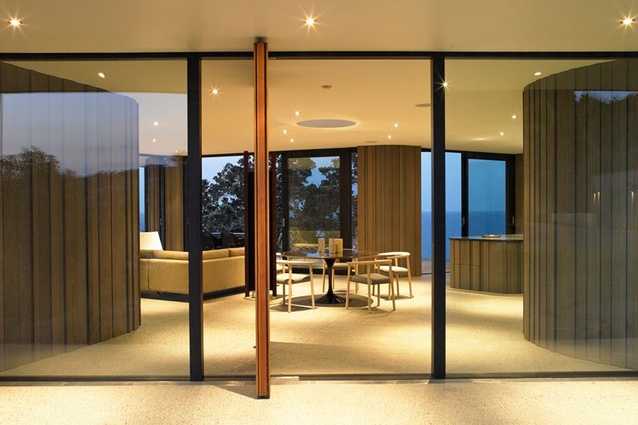Organic forms
2015 New Zealand Architecture Medal recipients for the Blyth Performing Arts Centre in Havelock North, Nicholas Stevens and Gary Lawson of Stevens Lawson Architects chat with Amelia Melbourne-Hayward about their passion for public buildings and what drives the practice.
Amelia Melbourne-Hayward: You formed Stevens Lawson in 2002, what did you hope to achieve by joining forces?
Gary Lawson: Nicholas had the business and then asked me to join him and we formed Stevens Lawson Architects. I guess one of the big ambitions for his practice and our partnership was to work on public architecture.
AMH: Iona College is the first public project that has been built isn’t it?
Nicholas Stevens: It is our first completed public building, but previously we had won the commission for The Remarkables Centre, an ambitious cultural and civic project in Queenstown. We worked hard on that for a few years but it finally became a casualty of the global financial crisis. It was an extraordinary commission to have had.
AMH: What a shame it wasn’t a little bit earlier so that it could have been completed.
GL: Yes, that’s true. Auckland City Mission was another major public commission and we’re still working with them on a project. The project went into hibernation after the financial crisis but it’s back again, albeit in a more modest form.
NS: So it is very satisfying to have completed the Blyth and for it to receive such recognition.
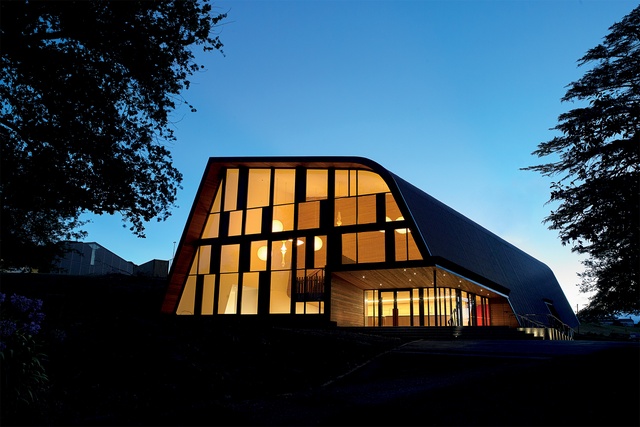
AMH: What talks to you particularly about public architecture and makes you want to work on projects such as Iona?
NS: One of the key reasons is that more people get to experience the architecture, and a wider cross-section of people. We believe that architecture has an important role of enhancing people’s lives. Also, there is immense satisfaction in designing buildings that are for performing music or that have a cultural aspect to them. The interaction of architecture and the arts provides such fertile ground.
GL: And in terms of the scale being generally bigger than residential work, you get different complexities which are interesting and engaging. It’s stimulating to work on different types of buildings and natural for us to seek challenges of greater difficulty.
AMH: How did you win the commission for the Blyth?
NS: There was an interview process with five shortlisted architects. We had designed a house in Hawke’s Bay which got us on the local radar, and we had designed a concert hall previously for Queenstown which gave us a bit of a track record.
GL: We can’t tell you why Iona chose us, there were definitely architects with more experience in this type of building, but we somehow connected with them. We were very fortunate to also be commissioned to design the Iona Information Resource Centre (IRC), which is effectively the library and English department. The two buildings were designed simultaneously and built at the same time as well. It was an ambitious building programme for the school.
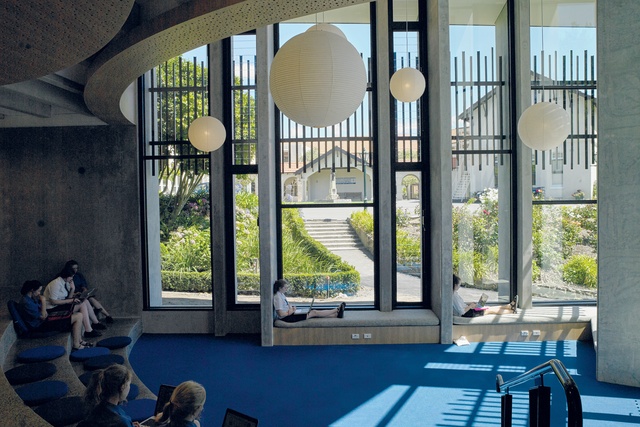
AMH: I think it’s easier to be inspired if you’re in a beautiful space and you have great facilities, it certainly encourages creativity.
NS: Yes, I hope the spaces are stimulating to be in and encourage the kids to think of what is possible, and to value themselves and their education.
GL: Apparently the girls adore both buildings. From a performing arts point of view, the girls are just blossoming and loving the buildings and the opportunities, so that’s very satisfying from our point of view.
AMH: What aspects were most challenging in terms of designing a public building as opposed to a residential project?
GL: I think with the Blyth in particular it had a very large design consultant team, so the coordination and management of that team is more intensive than with a residential project. With bigger buildings there’s bigger volume but maybe a little less detail.
Another big challenge with the Blyth was designing a building that was architecturally interesting and engaging but on quite a tight budget. We tried to use humble materials in an imaginative way.
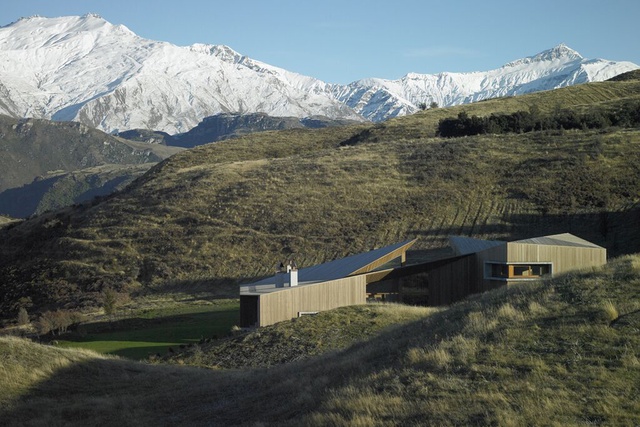
AMH: What sort of projects has Stevens Lawson got coming up?
NS: We’re working at the moment on the Pioneer Women’s and Ellen Melville Hall. We are involved in a major upgrade and transformation into a managed community centre right at the heart of Auckland city.
It’s an elegant 1960s mid-century modernist building designed by Tibor Donner who was the council architect of the day. However it’s quite run down and it’s been modified a little bit so we are trying to restore it to its full glory and embellish it a little to make it even better than it was. The construction doesn’t start for a few months yet but it’s well into the design phase. It’s got a beautiful hall upstairs, a 200 seat venue with a stage.
GL: We also have another significant school project coming up. It’s slightly too early to be able to talk about it, but it will be a similar scale to the Blyth.
AMH: What would be a dream or an ideal commission for each of you, if you could undertake any project anywhere?
NS: I think a museum or art gallery would be something we’d be keen to take on.
GL: Mine would be a church actually.
NS: Yes, and of course another concert hall would be great. Because we’re experienced now and as they say, experience is something you have just after you needed it!
AMH: How do you think the practice’s style has changed over the years?
GL: I’m not sure, style suggests it’s something we’re quite conscious of being a certain way, but with us the projects fall out of the process of our collective design. Nick and I design everything together. We both have a strong interest in visual things and making things look particular ways but over the top of that we prioritise the functionality of things, how they feel and work, and how the plans work.
So there is a style to the practice’s work, but it’s not something that we are consciously cultivating. It comes out of the process of design. We don’t run into a project thinking ‘oh it’s going to look this way’ before we know what we’re actually doing and how the plan works. I guess we try and experiment with each project in terms of the language of the materials and the forms we use.
NS: I think you could say the work has become more sculptural, and we definitely explore organic sculptural plans and forms in many of our projects.
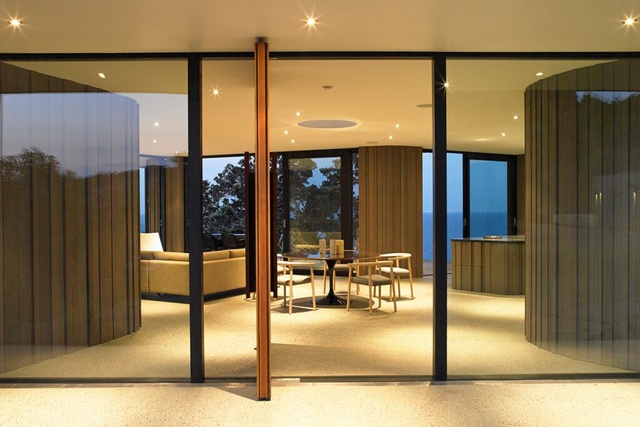
AMH: Your work has been compared on occasion to Alvar Aalto, would you agree with that statement?
NS: I’d be honoured to be compared to him as long as it was reasonably favourably! In terms of his influence, we would probably cite that as the major touchstone, if you’re talking about historic architects. Of all the modern masters he’s the one that we would probably take the most inspiration from.
AMH: What are some domestic buildings that you love or get inspiration from?
NS: Some of the houses of John Scott, the Martin house is a key one, and others like Ron Sang’s Brian Brake house in Titirangi. I like houses from all sorts of periods. I love the Binney designed houses in Auckland, Arts and Crafts-era houses often with black-stained cedar shingles.
AMH: Any international buildings that you love, Gary?
GL: Hard to say, definitely going to visit Frank Lloyd Wright’s seminal Falling Water was incredible, the interesting thing about it is it’s one that really lives up to its name, it’s famous for a reason.
One of my most favourite houses to visit in recent years would be Robin Boyd’s house in Melbourne. It’s an incredible house.
NS: Rudolf Schindler’s house in Los Angeles from the 1920s had a great influence on me.
AMH: To wrap it up, how do you maintain a work/life balance while running a busy and successful practice?
NS: We do something a little bit unusual in that we work four very long days and then have the Friday, let’s say floating. It can be part of the weekend but sometimes work intervenes. It’s a key part of our work/life balance and it’s something we’ve done since our practice was born, about 12 or 13 years ago. The idea is that the Friday is a sort of re-generation day, a good day for ideas, to charge the batteries in the creative sense.
GL: And it’s a day without the pressure of the office, so even if you do work on that day I find personally it’s not like being in the office. No phones and no distractions. The other thing we do in terms of work/life balance is to try and have a good time so that work isn’t too much of a burden. I think having a partnership is massively important for me in that we share a lot of the pressure and the strain.
There’s a lot of discussions we have about situations or events that are going on and when you discuss it, it makes it easier to deal with and we can strategise. That makes work less of a burden than it would be if I was on my own. I think it would be very difficult without that partnership.

